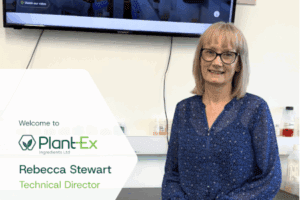Clay Gordon, Technical Editor, International Confectionery dives into the challenges and potential solutions to cocoa traceability, highlighting the future developments in supply chain data integrity
Traceability is hard. Really hard. And in cocoa, because of the largely distributed nature of its production, traceability is really, really hard.
We need only look at the confusion around the adoption and implementation of the EUDR and related legislation to get a glimpse of how complex the issues can be. It’s not a much of a leap to realize that implementing reliable and verifiable systems that ensure that cocoa is not coming from land deforested after a certain date, for example, is complex. The US adds its own complications – the Foreign Supplier Verification Program (FSVP) and the Food Safety Modernization Act (FSMA) regulations to name just two.
And it’s not just the technology challenges. The technological hurdles are compounded by cultural differences. “Simple” business solutions are not sufficient; the human relations components have to be considered as well. If the people being asked to implement the system don’t want to – for any reason or no reason – the system won’t get used properly, let alone fully. All it takes is a small handful of people to not care about a new system to block its success. As with all top-down “solutions” adopted by fiat, there are going to be people who will successfully game the system to their (unfair) advantage.
When we examine traceability in cocoa supply chains, it is clear that different segments of the chain need to be considered separately, as each segment presents different requirements that demand different approaches.
Before we examine some of those differing requirements, it makes sense to ask, “What is the nominal purpose of traceability in a supply chain?” That answer is surprisingly simple: It is to document the chain of custody from the point the cocoa enters the chain to its final destination (usually, the retailer who sells the finished product to a customer).
“Documenting the chain of custody,” means keeping track of who, what, when, how, and for how much – in formats and media that can be accessed by parties who involved in the movement of the goods that are being tracked.
In cocoa, the information that needs to be recorded in the chain of custody includes the sellers (ideally, starting with the farmer), the buyers, how much (weight) was involved and in what form (e.g., pods, wet mass, dried and bagged beans), the price, and the date. At each change of ownership, a new transaction record is created, and there is an identifier system that connects the transactions in a linked list that can be traversed in both directions. This linked list of transactions, where each transaction is usually visualized as a link in a chain (hence supply *chain*), is the chain of custody.
All other information about the transactions are metadata – data that fills out the picture of the goods being tracked. For a cocoa farmer, for example, that metadata includes, but is not limited to, location, area, the type(s) and count(s) of trees, agronomic practices, weather, any certifications the farmer has, to begin with. This metadata should exist electronically in a repository that is external to the chain of custody data and linked to transactions records. (This linking creates an n-D graph – a web structure – breaking the chain metaphor.)
Documenting the chain of custody of cocoa from the port of export to the port of import and then to the factory has a very different set of demands – especially regulatory and reporting – than tracking the movement of cocoa from the farm gate to the port of export.
It is here that international standards such as X12 come into play. X12 is a consensus-based set of syntax‑neutral and interoperable electronic data interchange (EDI) standards that form the backbone of global business to business. When cocoa is moved through customs at the port of export, and from the port of export through customs at the port of import, one or more X12 standards is involved. Any supply chain traceability tool that does not implement X12 natively is incomplete.
Another important standard in cocoa that should be natively implemented (the data structures required to capture and facilitate reporting) in a cocoa supply chain traceability platform is ISO 34101 “Sustainable and Traceable Cocoa”.
I have some reservations regarding how ISO 34101 is structured, as it conflates two very different concepts – ‘sustainability’ and ‘traceability’ in the same standard. This implies that ‘sustainability’ (as defined in the standard) is a requirement to be ISO 34101 compliant. As hinted at above, sustainability data is best considered a category of metadata best managed separately.
Sustainability metadata can be linked to traceability transaction records, but forcing these two unrelated concepts into the same standard makes implementing the standard in software far more difficult than it needs to be. The end result is likely to be more brittle (more difficult to “fix”) should the standard change. (It’s also not clear to me, as I have not purchased the actual standard, if 34101 incorporates relevant X12 standards.) Irrespective of those reservations, any cocoa supply chain traceability platform that does not implement ISO 34101 natively – and cannot generate ISO 34101 compliance reports at the push of a button – is also incomplete.
One final point to make while discussing standards is on the concept of interoperability. Today, the vast majority of cocoa supply chain traceability systems are walled gardens where, to mix metaphors, the data in one system are siloed and cannot be made available to or accessed by other systems (outside the originating entity). To be fair, there are defensible reasons for this, one of which is that there may be confidential, proprietary business information that a company wishes not to share, either with governments or competitors. This fact is, however, a dominating reason for resistance among industry players toward the adoption of a common, shared platform.
As I have written elsewhere, not having reliable, comprehensive data makes decision-making harder, at all levels. At a governmental level, not having good data results in it being much hard to make good policy decisions. Where ISO 34101 anticipates compliance with certification schemes to allow for compatibility between aligned certification schemes, it is not explicitly focused on technical interoperability (EDI-based or otherwise). I would like to see the authors and supporters of ISO 34101 engaging with ANSI (the organization that oversees X12) to develop and formally adopt interoperable data exchange standards for ISO 34101.
Stepping back and looking at the landscape from 10,000 meters, traceability, sustainability, and transparency are not synonymous concepts. Related, yes; synonymous, no.
A traceability system supports documenting and reporting about sustainability efforts. Transparency is about openness and sharing; it’s about what data an entity makes available to others and in what format(s), and what, if any interpretations are overlaid onto the data before sharing it, both internally and externally. Traceability systems can support both of those efforts, but sustainability and transparency do not require end-to-end supply chain traceability solutions.
While there are many challenges associated with developing cocoa supply chain traceability systems, the hardest challenge is what is referred to as “the first mile problem.”
Ideally, data collection should start at the farm gate. And this is where the distributed nature of production and the digital sophistication of farmers comes into play.
Assuming that all cocoa farmers have a smart device and an always-on data connection is to plan for failure. It’s imperative that the specifications for systems a) not contain any unsupportable assumptions, and b) have sufficient flexibility to accommodate the myriad different paths cocoa can take from the farm to the port.
And, if we start from the premise that the primary purpose of a traceability system is to facilitate business between trading partners, why not start imagining capabilities that address other key challenges cocoa faces?
Read the full article in our latest issue
September 2024 Single Issue form – International Confectionery Magazine (in-confectionery.com)









